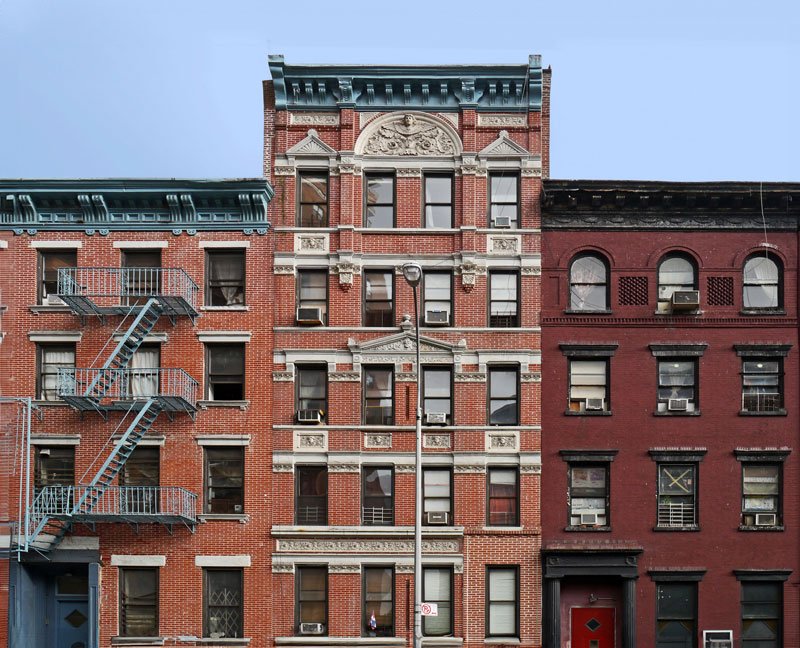Our society is grappling with mental health and overdose crises. In the United States in 2021, 22.8% of adults experienced mental illness,1 and more than 106,000 Americans died from drug-involved overdose.2 As the leader of a New York City nonprofit provider of shelter, housing, health, and employment programs, I know that addressing the needs of individuals experiencing these complex challenges is both critical and profoundly difficult. Our existing systems – necessarily – focus on treating the symptoms, including mental illness, substance use disorders, and homelessness. Sadly, this approach comes at the expense of addressing the root causes.

To make meaningful progress in our efforts to support sustained mental health and substance use recovery for both individuals and entire communities, we must improve stability for families in the first place – by expanding access to affordable housing and employment opportunities.
It is a common misconception that mental illness or substance use disorders are a primary cause of homelessness. However, for many individuals, it is the opposite. According to the National Health Care for the Homeless Council,3 the precarity of living in poverty in childhood, including being unhoused, can lead to higher Adverse Childhood Experiences (ACE)4 scores – which increases the risk for negative health outcomes, including mental illness. Preventing ACEs by creating and sustaining safe, stable, nurturing environments for children and families could potentially reduce the risk for mental illness and substance use challenges in adolescence and adulthood. Affordable housing and reliable income are critical building blocks for creating these environments.
Unfortunately, New York City is on the wrong track for the next generation. There are nearly 33,000 children living in shelters right now,5 and it is estimated that well over 100,000 children in our school system have experienced homelessness during the past year. There is a severe lack of affordable housing, with the number of apartments available for low- and middle-income residents at a 30-year low as of 20216 and rent costs reaching record highs.
The history of housing policy in the United States provides context for the current crisis. The GI Bill of the 1940s and 50s, while creating a generation of homeowners, systematically excluded Black soldiers and their families. Denying them the wealth-building opportunity of homeownership had devastating consequences – many of which continue to reverberate today. Unfortunately, the GI Bill was just one of the many discriminatory housing practices that created profound inequality. Urban renewal projects of the 1960s and 70s – such as the development of Lincoln Center in New York City7 – often led to the displacement of non-white and low-income communities.
These deeply embedded barriers certainly present challenges, but by increasing funding and resources for affordable and supportive housing, we can make a substantial impact on reducing homelessness – and, in turn, mitigate mental health and substance use challenges – in New York City.
Housing is an important first step. We also need more opportunities for those facing significant barriers to employment, including mental illness and substance use disorders. At Project Renewal, we prioritize vocational training, job placement, and job retention programs, especially those that do not just stop at entry-level work. We support people to get that first job, then a better job, and ultimately a long-term career.
For example, our Career Advancement Program (CAP) provides retention and advancement services tailored to helping our clients build careers. Last year, our CAP participants received an average annual salary increase of $8,507. Programs like this ensure career growth and maximize earning potential so participants can attain financial independence. This level of employment stability supports individual recovery and creates conditions for entire families to thrive.
If we truly want to address the root causes of mental health and substance use challenges, we must prioritize the creation and fast-tracking of affordable housing and job opportunities across New York City and every city in the nation. By welcoming new affordable housing developments into our neighborhoods and supporting programs that put people back to work, we can protect against some of the factors that can lead to mental health and substance use challenges – and move in the direction of greater justice and opportunity for all.
Eric Rosenbaum is President & CEO of Project Renewal in New York City. For more information, visit www.projectrenewal.org
References
- National Alliance on Mental Illness (NAMI). (n.d.). Mental Health Statistics, nami.org/mhstats
- National Institute on Drug Abuse (NIDA). (n.d.). Overdose Death Rates, nih.gov/research-topics/trends-statistics/overdose-death-rates – :~:text=More than 106,000 persons in,drugs from 1999 to 2021.
- National Health Care for the Homeless Council. (2019, August). Adverse Childhood Experiences (ACEs) Fact Sheet, org/wp-content/uploads/2019/08/aces-fact-sheet.pdf
- Centers for Disease Control and Prevention. (n.d.). About Adverse Childhood Experiences (ACEs), cdc.gov/violenceprevention/aces/about.html
- Coalition for the Homeless. (n.d.). Facts About Homelessness, coalitionforthehomeless.org/facts-about-homelessness/
- City Limits. (2022, May 17). NYC’s Latest Vacancy Survey Is Bad News for Affordable Apartment Seekers, org/2022/05/17/nycs-latest-vacancy-survey-is-bad-news-for-affordable-apartment-seekers/
- The New York Times. (2017, December 21). How Lincoln Center Was Built. It Wasn’t Pretty.,nytimes.com/2017/12/21/nyregion/how-lincoln-center-was-built-it-wasnt-pretty.html







